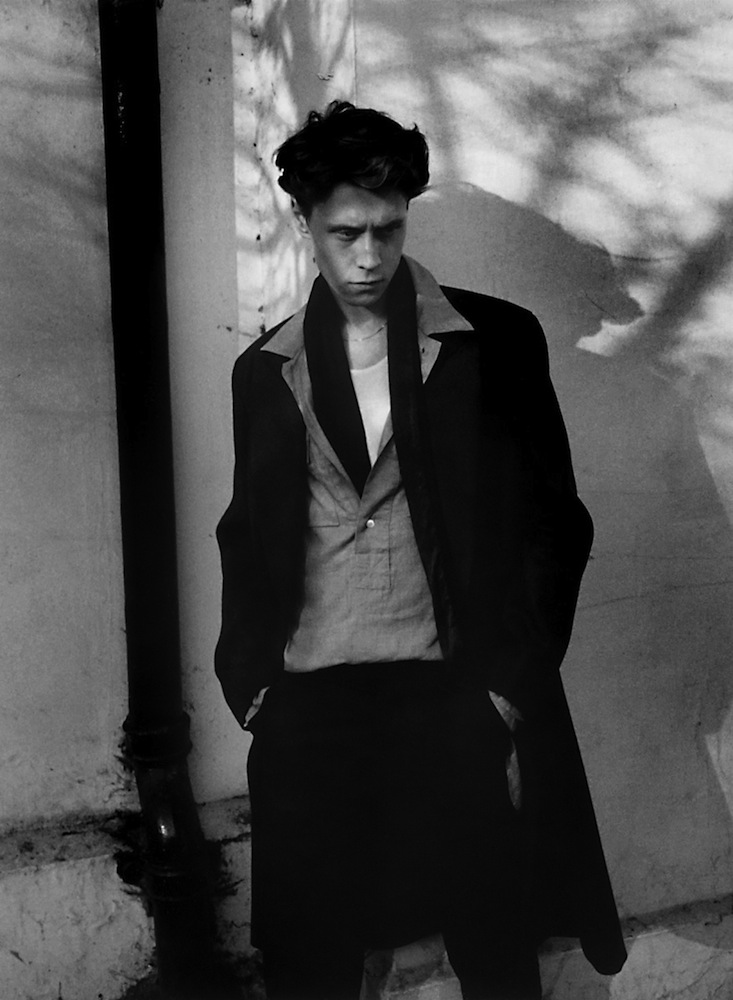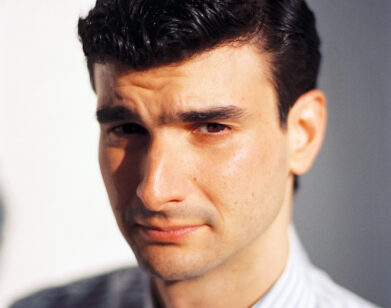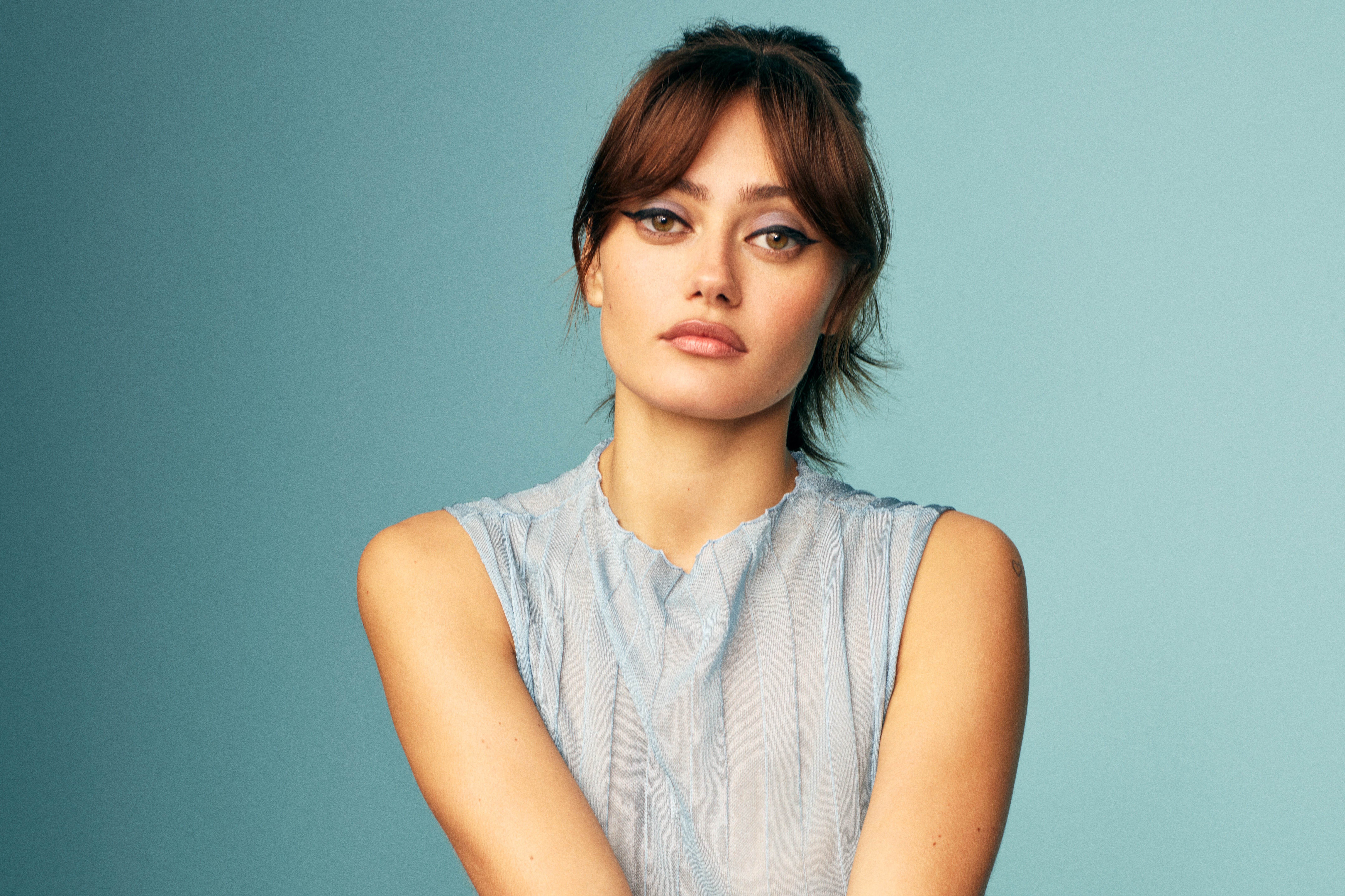The Lost Boy
GEORGE MACKAY IN LONDON, OCTOBER 2015. PHOTOS: ROBERT BELLAMY. STYLING: KELLY-ANN HUGHES. MAKEUP: JENNY COOMBS. HAIR: MIKE HARDING USING KEVIN MURPHY.
When George MacKay was 10 years old, casting director Shaheen Baig visited his school in London. She was looking for children to play the Lost Boys in 2003’s Peter Pan, and invited MacKay to a workshop day of drama games. “I think I read for all the Lost Boys at one stage,” MacKay recalls. “Then I got Curly, so I got my hair permed and that was that.”
After filming Peter Pan in Australia, MacKay was hooked. “I had such an amazing time doing Peter Pan,” he says. “I was definitely into drama and acting [before], but I had never considered doing it in any capacity outside of school. I knew I could watch other kids in plays and films, but I never really put two and two together,” he continues. “I think that’s part of what was lovely about the job—I wasn’t really thinking about it and there wasn’t any pressure, we just got to have a really wonderful time. “
MacKay returned to London and a string of indies followed, including Edward Zwick’s Defiance with Daniel Craig (2008) and The Boys are Back (2009) with Clive Owen. After graduating from the Harrodian School (the alma mater of fellow British actors Robert Pattinson, Tom Sturridge, and Will Poulter), the 23-year-old briefly considered attending drama school. “I auditioned for two drama schools in London and didn’t get in,” he says. “So I got my head down and was lucky enough to continue working.”
At the age of 19, MacKay starred alongside Jack O’Connell in the Michael Morpurgo adaptation Private Peaceful. “It was my first lead role after leaving school,” he says. “Being on set every day, I realized that’s part of what I enjoyed most. I really, really love that sense of involvement,” he continues. “That’s one thing that really sticks out, not as, ‘I’m an actor now,” but as, ‘Right, I know that I want to strive to be around this environment as much as possible because it felt so wonderful to be involved.'”
To date, MacKay’s biggest film is probably Pride, the story of gay activists and miners uniting against then-Prime Minister Margaret Thatcher in the early ’80s. In 2016, however, he will cross over the Atlantic. First up is Hulu’s 11.22.63, a series based on a Stephen King book about a man (played by James Franco) who travels back in time to the assassination of John F. Kennedy. Following that, he is hoping to do the festival circuit with Captain Fantastic, an indie film he recently wrapped with Viggo Mortensen, Ann Dowd, Frank Langella, and Katherine Hahn.
AGE: 23
HOMETOWN: Barnes, South West London
A THEATRICAL FAMILY: My mum was a costume designer and costume supervisor in the theater and especially the ballet. But that was before I was born. My dad used to work in the theater as a stage manager, production manager, and lighting designer. So they were on the other side of it. My now dad now works for a production design company and my mum stopped work after she had both me and my sister.
FAVORITE CHILDHOOD FILM: When me and my sister were toddlers, it was The Jungle Book literally every day. If it was lunchtime, it was Jungle Book time. We would cry every time Baloo looked like he was in a bad way. [So] Jungle Book was the first one, but then for me, personally, I think it was Gladiator and also “The Making of Gladiator,” which is quite an adult one. It was one of the first DVDs that I was allowed to watch. I don’t know why—it’s pretty violent—but I think it was because it was historical violence. It just blew me away every time I watched it: the music, all the characters, the scale of it, the drama.
“THE MAKING OF GLADIATOR” FILM SCHOOL: There was this whole other DVD inside [the Gladiator DVD], which told you how they made it. I used to watch the film, watch the making of, watch the film, watch the making of—and sometimes just the making of. I remember there’s a bit where they pan across the wardrobe and makeup tents for that first battle with all the German Bavarian soldiers. There was a big mud pit and spray-painted across was, “No moaning please.” And you see all these big guys getting covered in mud and you’re like, “Oh my god, they would moan about getting muddy? There’s people putting mud on them, they don’t just look like that?” Then also being like, “God, Commodus is American!” And seeing the Colosseum and going, “Wow, they had actual horses,” and then at the same time, “But it’s only half as big!” I found the whole thing extraordinary. There was the section on the cutting room floor. I was like, “There are all these extra bits in my favorite film that weren’t in there. Why did you not put that scene in there? There were lions involved! Surely you should put lions in the film, that would be great.”
Also, just watching how underwhelming it can look and basic and small when it’s not shot in a certain way or it hasn’t got the music or it doesn’t have the color correction on it and you’re filming from a different angle: “Those horses are kind of small. You’ve only got a half a stadium.” Whereas when you watch it you’ve got these thunderous beasts and this roaring crowd. I was talking to someone the other day about a scene in Pride—the scene of the march at the beginning. When we filmed that, no one was making any noise. We were all shouting when everybody was pretending to blow whistles and pumping their fists completely silently. It’s kind of hilarious, you’ve got all these people in costume with big banners opening their mouths as if they are shouting and making no noise while you’re walking down the street [raises voice] delivering your lines like that. It’s just the magic of that that it comes together and no one would know. That’s what’s so cool.
ON SET SKILLS: I was commended on my falconry skills [in How I Live Now, 2013]. I remember when you first meet them, they’ve got this thing where if hawks or falcons get awkward, they will just spread their wings. A running joke on set was if ever anything was slightly awkward, everyone would put their arms out really wide making an awkward hawk.
THEATER VS. FILM: Theater is a larger performance. If you’ve got a camera that’s two feet away from you, you have to bring it all back down. It’s a lot more insular. It’s different brush strokes. Whereas on stage, you’re playing to people who, depending on the size of the theater, might be 40 meters away from you. They’ve just got to physically hear, and they can’t see a flicker of an eyebrow or something that you’re trying to be clever about: “If I blink twice, that will show that I’m secretly upset.”
11.22.63: I play a character called Bill Turcotte, and his role within the show is different from in the book. I join James [Franco]’s character Jake on his journey and go with him. I’m sorry I’m being so vague, it’s just they’re so secretive about it. I’m from the past…We filmed it mainly in Toronto. The story is set mainly in Texas and we cheated and filmed a lot in studios for the indoor sets or, because a lot of the story is back in the ’60s, in towns around Toronto that look a bit more period and nondescript. It’s amazing what the art department and the set dressers can do; you put a road sign up and flags and period cars. That’s the main thing, I think, you go to a pretty rundown street and there’s all these banged-up ’50s cars and suddenly it looks like a tough neighborhood from the ’60s. I don’t really watch the monitors while I’m there, but seeing pictures from set, it’s seamless how they do it.
11.22.63 PREMIERES FEBRUARY 15, 2016 ON HULU.
For more from our 16 Faces of 2016, click here.







